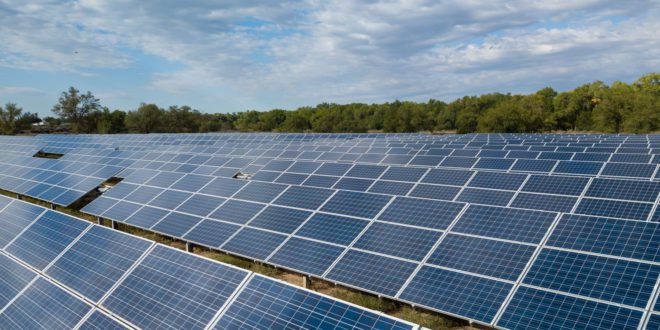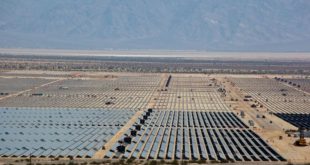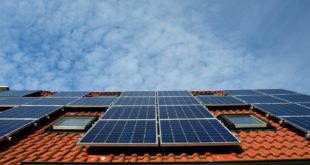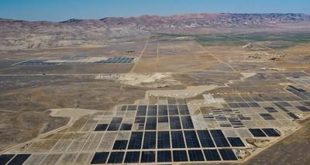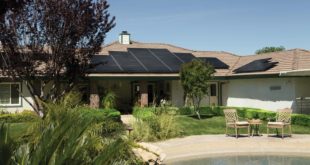By Nathan Fabrick
Solar energy is poised to become an important part of America’s new energy supply as the country is preparing to transition from fossil fuels to renewable energy within the next few decades. President Biden wants the United States to achieve a 50-52 percent reduction from 2005 levels in economy-wide net greenhouse gas pollution in 2030. Within the mix of renewable energies that will help achieve this transition, solar energy is poised to play an important role.
While one would expect farmers and other landowners to embrace solar farms as a welcome source of (additional) income, there is often reluctance on their part to consider opportunities offered by developers and the reason for their reticence are a series of popular beliefs about solar farms that bear little resemblance to the actual reality of solar farm investment projects.
In what follows, we list and debunk four myths that will cool landowners’ enthusiasm against solar farms and explain why these myths are based on false presuppositions.
1. Solar farms risk going “belly up”
A common misconception is that the chance of bankruptcy is tied to the project developer and their creditworthiness. While project developers play a critical role in developing and constructing the project, once the project is operational, it is secured by a long term power purchase agreement (PPA) with the utility company. It’s typical that the project will trade between developers and investment groups at the time of operation, but the key point is that regardless of who owns the project, the utility will still be on the hook for purchasing power. A better question would be, what are the odds the utility will go bankrupt? While this is a possibility, it is quite remote.
2. Projects leave a mess at the end
Many landowners will fear that panels, wiring and sub-surface improvements will have to be cleaned up and removed on their dime whenever the project comes to an end. Most solar lease options include a decommissioning provision – requiring the project owner to remove the panels at the end of the term. This still leaves the question – what if the owner decides that it isn’t worth the expense to remove? While decommissioning bonds can be placed on the project and in some cases are required by local authorities, they come with an added expense that is a direct negation of money that could be paid to the landowner as rent. Practically, it’s important to note that unlike other long term infrastructure projects like wind turbines or cell phone towers, solar farm construction is simpler – involving a series of posts placed six feet into the ground. Removing them is far less expensive. Additionally, the metals in the panels are highly valuable. Imagine them like a field full of copper wire from refrigerators…there is financial upside even in the salvage value of the project.
3. There will always be time
Many landowners seem to think they can just wait forever and that developers will at any point in the future still be as readily available and wanting as they are today. This is not how these things will work out, however. A key constraint in solar development is the utility infrastructure – including power lines and substations. Each line has a certain size (voltage) which is like the lanes on a highway – residential roads can handle less traffic than an interstate. As solar farms are developed, the capacity on the lines is a precious asset that will disappear as more projects are developed. So, a landowner might have land right next to a substation that initially may be a perfect site for a project, but if a project is then constructed a mile down the road that feeds back to that substation, the capacity could well be gone by the time the landowner decides to move forward.
4. The land is tied up for years on end before the rent begins
Many landowners are worried about their land being tied up for several years before receiving rent. In cases where the property is currently being farmed or used for recreational purposes, there is no limitation on that use during the development period. So while in other cases, “tying” the property up may indicate losing the flexibility to use one’s property, it’s not so in the case of solar. After working closely with landowners and developers over the past few years, we’ve found that it helps for landowners to be specific about their concerns. For example, what happens when construction begins in the middle of a growing season and a landowner’s entire crop is ruined? Developers are often happy to include crop provisions to compensate the landowner for the damages.
One unavoidable challenge with developing a solar project is that it takes time. Developers must invest extensively in engineering, interconnection applications, permitting activities, and more all prior to knowing if the project will come to fruition. So, while it may seem like a “tie up” there are legitimate reasons for the time and there are investments being made aside from any option payments made to the landowner during the development period.
Landowners will often be reluctant to consider solar farms because they are afraid of projects going belly up, leaving a mess at the end, or being tied up for years on end. Some landowners also seem to think that they will always have time to decide… Luckily, all of the common misconceptions about solar farms are easy to disprove so that landowners who are well informed can evaluate the true value of the opportunities offered.
Based in Florida, Nathan Fabrick is VP of Corporate Development of National Land Realty. The company’s proprietary video technology, Land Tour 360®, as well as its GIS land mapping system, LandBase™, is offered for free to the public. More info at www.nlrsolar.com
 Alternative Energy HQ solar power for homes, wind energy, and bio fuel issues
Alternative Energy HQ solar power for homes, wind energy, and bio fuel issues
